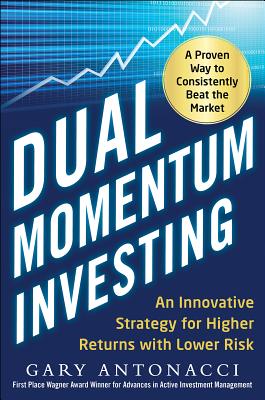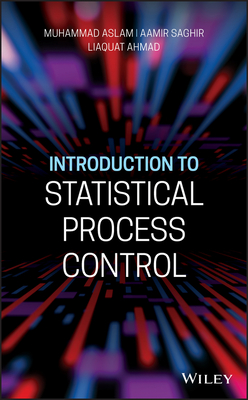Investing in Stocks, How to Win Big! Strategizing, Positioning, and Leveraging for Success: Your Personal Guide to: Money and Economics; Investing in
Mishra, Kishore K.
- 出版商: Createspace Independent Publishing Platform
- 出版日期: 2016-06-22
- 售價: $920
- 貴賓價: 9.5 折 $874
- 語言: 英文
- 頁數: 366
- 裝訂: Quality Paper - also called trade paper
- ISBN: 1533486387
- ISBN-13: 9781533486387
-
相關分類:
經濟學 Economy
海外代購書籍(需單獨結帳)
相關主題
商品描述
An informed investor is an intelligent investor, and an informed decision is an intelligent decision. However, we make wrong decisions mainly because we do not have all the information or simply are not knowledgeable about something. Many people are fearful about the stock market because they have been burnt in the past or know someone who has lost money in the past. They are not wrong, and they are not alone. We are not taught about finance, investing, and stocks in school or college. We learn it by trial and error, and along the way, many of us are left with a bad taste that makes us fearful or overly conservative in our investments. The recent scars of 2000 and 2008 have been so deep that many individual investors just left the field. In addition, the perception is that one has to be an expert in economics and spends a lot of time to be successful in investing. It is not true. We can build basic understandings of how things work slowly and steadily. This book will go a long way towards that and will make the process easier. There are no recipes for overnight success or cut-and-dry method to be successful in the stock market. It is the proverbial slow-but-patient tortoise that beat the fast-but-inconsistent fox to the finish line. There are many ways to make money, and plenty of ways to lose money. Investing in stocks is a learning process, and you will walk sure-footed as you gain more experience. This book will be your companion with many useful tips, insights into how things work, and proven and successful strategies. The book is divided into four sections. Section I builds the foundation for a long-lasting investing journey - it introduces and refreshes basic economics, accounting, math, government systems, and legal implications. Section II brings the investment choices available in the market place with their pros and cons. However, the main focus and coverage is on investing in stocks based on fundamental analysis. It provides an in-depth analysis on how the stock market works and offers strategies to make money consistently while minimizing risk. Section III discusses about other investment choices, such as Mutual funds, ETFs, Options, Futures, Forex, and real estate. Section IV discusses about personal finances, how to make more money at work, how to reduce expenses without sacrificing benefits, and how to be savvy about taxes and tax planning. I strongly believe that this book will be your true friend and source of knowledge that you could always count on. When I look back, my initial investment days were hit and miss. I had very little understanding of how and why the stock price changes - I would consider a stock cheap and buy when it drops by 50 percent and keep putting more money as the stock went down further, only to see that the company went out of business in a few years. I did not give up. I studied books and analyzed each investment in details, and tried to understand why it happened the way it happened. Though the stock market is highly unpredictable, there are a few things that repeat in clockwork precision. Stock market goes through cycles. Both the positivity and the negativity get highly amplified compared to the reality. The market and stock price would go up very high or go down very low diverging far away from the real intrinsic value. These are the points where you can lose a lot or make a lot. Speculation can make you some quick money, but on a continual basis, you would lose what you gained. On the contrary, if you can choose stocks that are fundamentally strong and pick them up when they are out of favor, it increases the probability of generating good returns while reducing the risk of losing money. It is the experience, the patience, the discipline, and the desire to be successful that will make you a good investor. Stock investment is part science, part art, but mostly it is the mind and the psychology.
作者簡介
Kishore Mishra lives in Silicon Valley and works in computer chip design. He received BSEE from NIT, Rourkela, a premier engineering institution in India. Later, he received MSEE form University of Toledo, Ohio. Early on, he worked with great companies, such as Texas Instruments and Intel. Lately, he has been an entrepreneur and has founded successful start-up companies. In 2004, he co-founded ASIC Architect, Inc., an Intellectual Property company. As CEO, he led the development of leading-edge IPs, leading up to acquisition by Gennum in 2008. His interests are in chip development, PCI Express, and memory controller. Recently, he worked on multi-core, cache-coherent NOC (Network on Chip) design. He holds several US patents. He is the author of "Advanced Chip Design," which has been on Amazon's bestseller list regularly. Besides first love for computer design, he has deep love for Economics and investing in stocks. What started as a casual curiosity is now a major involvement. He focuses on companies with strong fundamentals (good management, solid balance sheet, increasing or steady income, positive cash flow, dividends, and stock buyback). He starts taking positions when they are out of favor and price is cheap. He does not have a set time for holding - from a few weeks to a few months. His investment philosophy is based on increasing the probability of success and positioning for success. Once the goal (10-20% gain) is achieved, he moves the money to another investment that provides better probability. This has been working out well for the last several years where market has been moving sideways. If he were to invest coming off a market crash like the 2009, he would consider holding long-term. He generally keeps some cash for good opportunities. He sometimes takes concentrated positions with solid companies that have been unduly punished. He uses margin judiciously with a high degree of safety. He uses the market inefficiency and leverage to make many small (5%-20%) gains that eventually add up to respectable numbers. He believes that success in the stock market largely depends on the overall strategy, positioning to win, using leverage judiciously, and having a plan to deal with possible market crash. He learns every day. He keeps an open mind and studies the great investors of all times. He loves writing, and this book is the product of his passion for investing and the desire to share his thoughts and experience with fellow investors.































